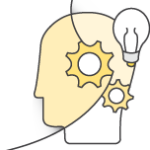Planning and Designing Databases on AWS
In this course, you will learn about the process of planning and designing both relational and nonrelational databases. You will learn the design considerations for hosting databases on Amazon Elastic Compute Cloud (Amazon EC2). You will learn about our relational database services including Amazon Relational Database Service (Amazon RDS), Amazon Aurora, and Amazon Redshift. You will also learn about our nonrelational database services including Amazon DocumentDB, Amazon DynamoDB, Amazon ElastiCache, Amazon Neptune, and Amazon QLDB. By the end of this course, you will be familiar with the planning and design requirements of all 8 of these AWS databases services, their pros and cons, and how to know which AWS databases service is right for your workloads.


Planning and Designing Databases on AWS
current course dates can be found at the bottom of this page … company training available on request!
Course description
In this course, you will learn about the process of planning and designing both relational and nonrelational databases. You will learn the design considerations for hosting databases on Amazon Elastic Compute Cloud (Amazon EC2). You will learn about our relational database services including Amazon Relational Database Service (Amazon RDS), Amazon Aurora, and Amazon Redshift. You will also learn about our nonrelational database services including Amazon DocumentDB, Amazon DynamoDB, Amazon ElastiCache, Amazon Neptune, and Amazon QLDB. By the end of this course, you will be familiar with the planning and design requirements of all 8 of these AWS databases services, their pros and cons, and how to know which AWS databases service is right for your workloads.
Course objectives
In this course, you will learn to:
- Apply database concepts, database management, and data modeling techniques
- Evaluate hosting databases on Amazon EC2 instances
- Evaluate relational database services (Amazon RDS, Amazon Aurora, and Amazon Redshift) and their features
- Evaluate nonrelational database services (Amazon DocumentDB, Amazon DynamoDB, Amazon ElastiCache, Amazon Neptune, and Amazon QLDB) and their features
- Examine how the design criteria apply to each service
- Apply management principles based on the unique features of each service
Intended audience
This course is intended for:
- Data platform engineers
- Database administrators
- Solutions architects
- IT professionals
Prerequisites
We recommend that attendees of this course have previously completed the following AWS courses:
- AWS Database Offerings
- Data Analytics Fundamentals
- Architecting on AWS
Activities
This course includes:
- Training with instructor
- Practical exercises
Course duration / Price
- 3 days / € 2,095.00 (excl. tax) per person (DE)
Course outline
Day 1:
Module 0: Planning and Designing Databases on AWS
Module 1: Database Concepts and General Guidelines
- Topic A: Databases in the cloud
- Topic B: Database design principles
- Topic C: Transactional compliance
Module 2: Database Planning and Design
- Topic A: Workload requirements
- Topic B: Design considerations
Module 3: Databases on Amazon EC2
- Topic A: Amazon EC2 for hosting databases-
Module 4: Purpose-Built Databases
- Topic A: The journey to AWS
- Topic B: Data modeling basics
Module 5: Databases on Amazon RDS
- Topic A: Amazon RDS databases
- Topic B: Amazon RDS distinguishing features
- Topic C: Amazon RDS Design considerations
- Lab 1: Working with Amazon RDS databases
Module 6: Databases in Amazon Aurora
- Topic A: Amazon Aurora databases
- Topic B: Aurora distinguishing features
- Topic C: Aurora design considerations
Day 2:
Module 6: Databases in Amazon Aurora (continued)
- Lab 2: Working with Amazon Aurora databases
Module 7: Databases in Amazon DocumentDB (with MongoDB compatibility)
- Topic A: Amazon DocumentDB
- Topic B: Amazon DocumentDB design considerations
- Lab 3: Working with Amazon DocumentDB databases
Module 8: Amazon DynamoDB Tables
- Topic A: Amazon DynamoDB
- Topic B: DynamoDB data modeling
- Topic C: DynamoDB distinguishing features
- Topic D: DynamoDB design considerations
- Lab 4: Working with Amazon DynamoDB Tables
Day 3:
Module 9: Databases in Amazon Neptune
- Topic A: Amazon Neptune
- Topic B: Neptune design considerations
Module 10: Databases in Amazon Quantum Ledger Database (Amazon QLDB)
- Topic A: Amazon Quantum Ledger Database (Amazon QLDB)
- Topic B: Amazon QLDB Design Considerations
Module 11: Databases in Amazon ElastiCache
- Topic A: Amazon ElastiCache
- Topic B: ElastiCache for Memcached
- Topic C: ElastiCache for Redis
Module 12: Data Warehousing in Amazon Redshift
- Topic A: Amazon Redshift
- Topic B: Amazon Redshift distinguishing features
- Topic C: Amazon Redshift data modeling
- Topic D: Amazon Redshift design considerations
- Lab 5: Working with Amazon Redshift Clusters
IMPORTANT: Please bring your notebook (Windows, Linux or Mac) to our trainings. If this is not possible, please contact us in advance.
Course materials are in English, on request also in German (if available).
Course language is German, on request also in English.
Upcoming training dates for: Planning and Designing Databases on AWS
| Datum | Kurs | Preis pro TN | ||
|---|---|---|---|---|
| 01.07.2025 - 03.07.2025 | Planning and Designing Databases on AWS Online in - Virtual Classroom | 2.095,00 EUR zzgl. MwSt. | Buchen |
